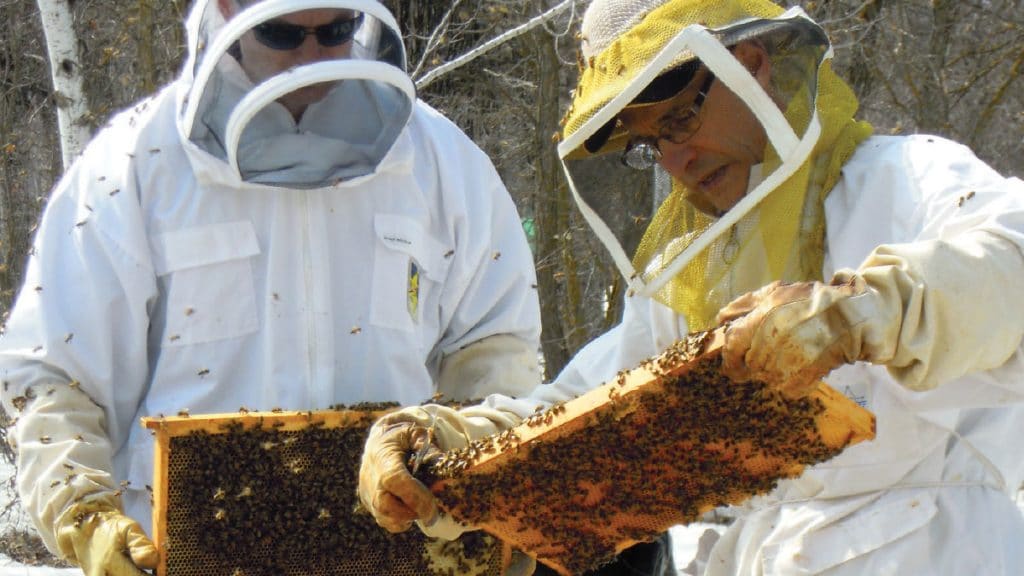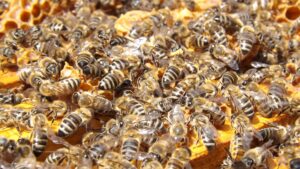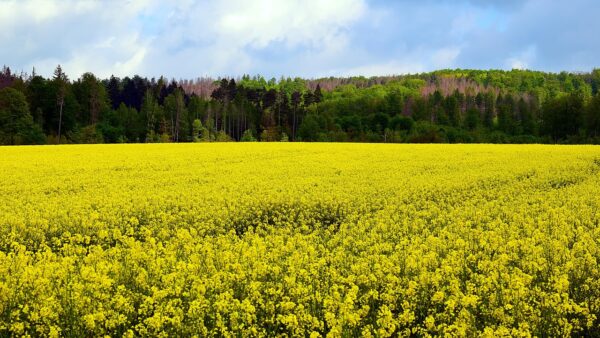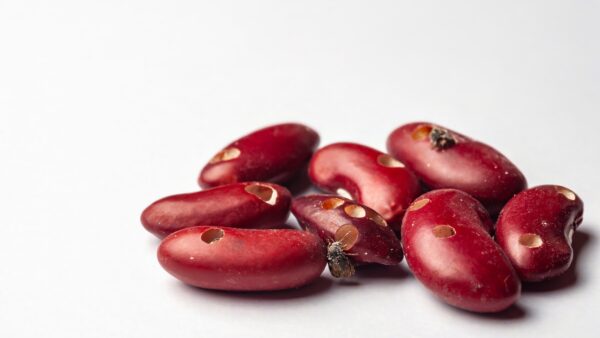According to Statistics Canada, this critical pollinator has been increasing in number during the past decade.
_x000D_
Bees are an essential component of Canadian agriculture, with the Canadian Honey Council pegging the value of honeybees to crop pollination in this country alone at more than $4.4 billion. In recent years, concerns have been raised in Canada and around the world about bee population declines and long-term pollinator health, prompting questions about the sustainability of the Canadian honeybee industry._x000D_
_x000D_
The latest figures from Statistics Canada, however, indicate the number of honeybees in this country has been rising during the past decade. The amount of bee colonies rose from 615,541 in 2005 to 694,217 in 2014 — an increase of almost 13 per cent. The 2014 total is also just shy of the record number of 707,375 colonies in 1986. The number of beekeepers tending all those bees went up by 10 per cent during the past decade, totalling 8,777 in 2014._x000D_
_x000D_
Why has the number of honeybees gone up? One simple explanation is that more people are raising bees, but Rod Scarlett, the CHC executive director, maintains that the nature of beekeeping and who’s doing it is also changing._x000D_
_x000D_
Scarlett points out that an increasing number of smaller-scale operators, as well as hobbyists and urban apiarists, have joined the ranks of Canadian beekeepers in the past decade. “We’ve see big growth in this area, particularly in Ontario and B.C.,” he says._x000D_
_x000D_
Scarlett notes there’s also a definite trend toward younger people getting into beekeeping, especially on the commercial side. “It’s a young industry, and that’s unique within the agricultural sector,” he says._x000D_
_x000D_
Scarlett cites a number of other factors behind the honeybee growth trend, including:_x000D_
- _x000D_
- A better understanding and treatment of important bee pests and diseases, such as the varroa mite and a fungus called nosema
- Improved hive management.
- Better bee stock.
_x000D_
_x000D_
_x000D_
_x000D_
Scarlett says advances in recent years have enabled beekeepers and growers to get a better handle on managing risks to bee health. “We have a few more tools in the tool kit,” he explains, noting that integrated pest management is one such tool._x000D_
_x000D_
Neonicotinoid insecticide-treated seed and its impact on pollinator health have come under increasing scrutiny in recent years. Scarlett acknowledges there’s a growing awareness in the agricultural 
_x000D_
“The whole farm community, which includes beekeepers, is taking a good look at the use of pesticides,” he says. “It’s a part of the puzzle.”_x000D_
_x000D_
Mark Brock is the chairman of Grain Farmers of Ontario, which is involved in a campaign called BeesMatter. The campaign was launched by a coalition of grower organizations, industry associations and agri-businesses that are lobbying against the Ontario government’s plans to cut neonicotinoid pesticide use in the province by 80 per cent by 2017._x000D_
_x000D_
“There’s been a lot of negative publicity around the state of honeybee health in Canada, specifically in Ontario. We wanted to ensure that consumers and society in general have the opportunity to hear both sides of the story and that there’s good communication on all fronts so that people understand the issue and can make informed decisions,” Brock says._x000D_
_x000D_
“We take pride in doing a good job on our farms and using products only when necessary,” he adds. “We always try to balance those decisions with best management practices, like having integrated pest management systems in place.”_x000D_
_x000D_
Brock maintains there has been significant progress in treated seed stewardship by everyone in the industry in recent years — the Grain Farmers of Ontario, for example, is applying the finishing touches to a proposal for providing additional protections for pollinator health that it plans to present to the Ontario government._x000D_
_x000D_
During spring planting in 2012 and 2013, some beekeepers in parts of Ontario and Quebec reported bee mortality incidents. Subsequent investigations led Health Canada’s Pest Management Regulatory Agency to conclude that dust released during the planting of neonicotinoid insecticide-treated corn seed contributed to the losses._x000D_
_x000D_
The PMRA then implemented a series of mitigation measures to reduce dust exposure to pollinators in collaboration with industry stakeholders. The agency has been monitoring bee health, and in November 2014, it reported that “information to date indicates the number of incident reports associated with neonicotinoid pesticide use during the planting period in 2014 was 70 per cent lower than in 2013.”_x000D_
_x000D_
The PMRA cautioned against making a direct correlation to the risk mitigation measures, and said that the 2014 spring weather in Ontario was likely a contributing factor. The agency is conducting a thorough investigation of all 2014 incidents and is studying a large number of samples for the presence of pesticides and bee viruses. A clearer picture should emerge later this year when PMRA releases the results of its analysis.











